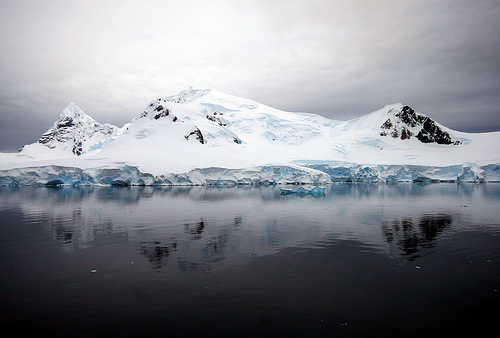
What this looks like to me is the opening scene of a sci-fi horror movie, where the scientists out in the ice deserts of Antarctica break through ancient ice to an underground lake of freshwater that’s been cutoff from the outside world for 20 million years except, nothing scary happened when these guys actually did just that. Bummer?
Msnbc.msn.com writes:
MOSCOW — Opening a scientific frontier miles under the Antarctic ice, Russian experts drilled down and finally reached the surface of a gigantic freshwater lake, an achievement the mission chief likened to placing a man on the moon.
Lake Vostok could hold living organisms that have been locked in icy darkness for some 20 million years, as well as clues to the search for life elsewhere in the solar system.
Touching the surface of the lake, the largest of nearly 400 subglacial lakes in Antarctica, came after more than two decades of drilling. It was a major achievement avidly anticipated by scientists around the world.
“In the simplest sense, it can transform the way we think about life,” NASA’s chief scientist, Waleed Abdalati, told The Associated Press in an email Wednesday.
The Russian team made contact with the lake water Sunday at a depth of 12,366 feet (3,769 meters), about 800 miles (1,300 kilometers) east of the South Pole in the central part of the continent.
Scientists hope the lake might allow a glimpse into microbial life forms that existed before the Ice Age and are not visible to the naked eye. Scientists believe that microbial life may exist in the dark depths of the lake despite its high pressure and constant cold — conditions similar to those believed to be found under the ice crust on Mars, Jupiter’s moon Europa and Saturn’s moon Enceladus.
Akin to the space race
Valery Lukin, the head of Russia’s Arctic and Antarctic Research Institute, said reaching the lake was akin to the Americans winning the space race in 1969.“I think it’s fair to compare this project to flying to the moon,” said Lukin, who oversaw the mission and announced its success.
American and British teams are drilling to reach their own subglacial Antarctic lakes, but Columbia University glaciologist Robin Bell said those are smaller and younger than Vostok, which is the big scientific prize.
“It’s like exploring another planet, except this one is ours,” she said.
Read more at msnbc.msn.com


